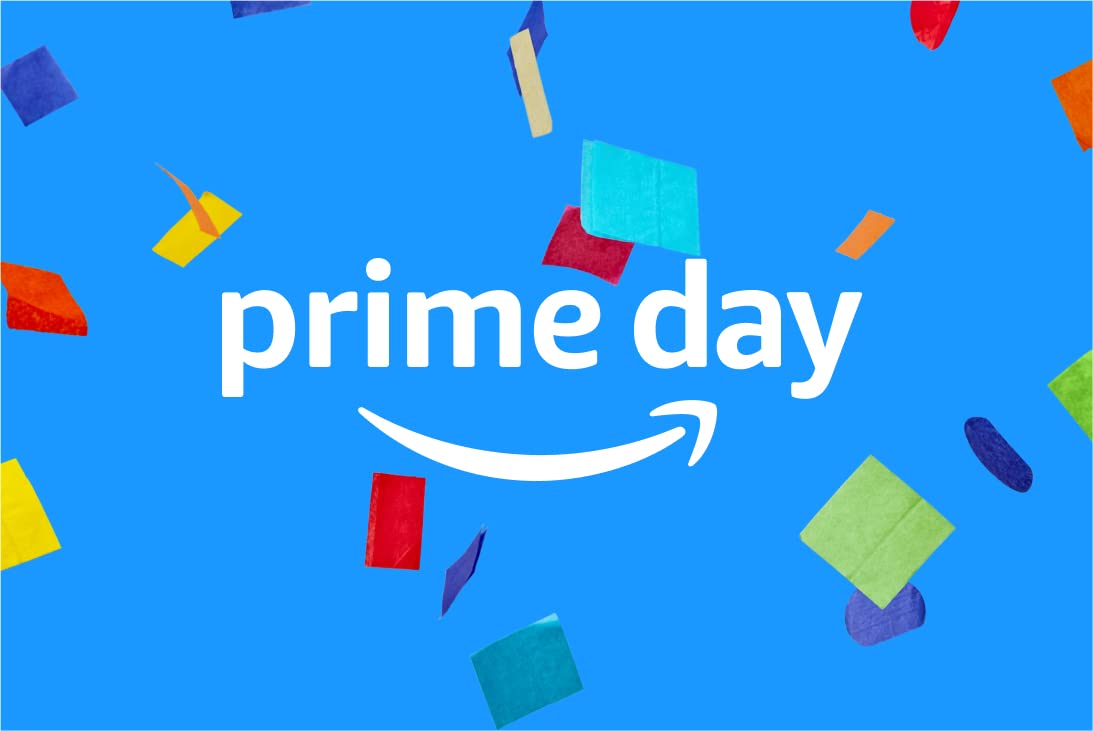On your mark, get set, and GO Amazon sellers! Now officially kicks off the final sprint in preparation for Prime Day. So, mark your calendars because the event is back for its 10th anniversary this July, as announced by Amazon CEO, Doug Herrington. With last year’s record-breaking $2.5 billion in savings for customers and skyrocketing sales for both the marketplace and independent sellers, Amazon Prime Day 2024 promises to be the biggest yet. This means massive increases in traffic and sales volume, making it a prime (haha!) opportunity for Amazon sellers to maximize their profits. There’s no better time than now to get your inventory and advertising planning done.
Major shopping events, like Amazon Prime Day, are THE time to solidify your presence on Amazon’s marketplace, attract new customers, and, of course, boost sales. However, with great popularity comes great competition. While Amazon Prime Day holds great potential for sellers, it’s still critical that you bring your A-game if you hope to win big. Not only is it important that you refresh and restock inventory for popular products as soon as possible, but right now is pivotal for your marketing and advertising campaigns.
By starting Amazon Prime Day marketing and advertising strategies now, you can ensure that you’re making the most of this giant increase in traffic. In this blog, we’ll go over the step-by-step process for successful Prime Day advertising and marketing campaigns, so that there is no doubt in your mind that you are ready. We’ll cover everything from the basics of marketing for a shopping event to fully optimizing your ad campaigns in the days leading up to the event and throughout. So if you’re ready to reach a new peak in your sales, buckle your seatbelt to take off with us on the rollercoaster that is Prime Day advertising.
Prime Day Advertising Starts Now

If you’re hoping to take full advantage of that potential for your Amazon business, beginning Prime Day advertising ahead of time is the secret sauce to success.
Optimize Product Listings
While optimizing your product detail pages should always be a priority, it’s especially important for your Amazon business around Prime Day. By optimizing your product listings you’ll have a better chance to reach new potential customers, as your listings show up more frequently in relevant search results. For the best results on Prime Day, utilize the following strategies to optimize your product listings:
Audit and update
Review your listings for accuracy and thoroughness using tools available in Amazon Seller Central. Make sure that your listings are completed with all relevant information and sections filled out to increase SEO and give potential customers a complete picture of your items. For example, are your product bullets well-written and descriptive of product features? While these may seem like minor details, they can make a big impact on conversion rates.
Ensure strong SEO
Did you know that Amazon is technically a search engine, just like Google? To make the most of Amazon’s search result you’ll need to ensure you have strong SEO for your products. Make sure your product titles, descriptions, and bullet points are all concise and rich in keywords. However, keep in mind that real customers will still be reading your content and looking for information, so don’t over SEO.
Enhance with visuals and videos
Amazon sellers can put up to six images and one product video on their listings, all of which should be thoughtfully utilized if possible. By taking advantage of those extra images and video, you’re likely to improve your conversion rates and search engine optimization as customers love to see exactly what they’re getting. Be sure to include a variety of relevant content, including lifestyle images, up-close details, and any other relevant aspects.
Increase budgets and bids for keywords
Since Prime Day is so competitive, it’s important to identify the top-performing keywords for your products and allocate higher budgets for any must-win keyword campaigns. Similarly, if you bid on any high impression, short-tail keywords it’s important to increase your bids. By identifying high impressions with low conversions you can gradually increase bids while monitoring their performance.
Set Aside Additional Budget for PPC Bids
Prime Day is highly competitive for all participating sellers, which means that the cost of ad space within the marketplace will increase rapidly alongside demand from Amazon sellers. To account for the increased demand and ensure that consumers still see your ads, it’s wise to raise your maximum PPC bid. However, you still need to keep a healthy cap on your bids to make sure that you don’t run out of your PPC budget too quickly.
Once you’ve identified the top performing keywords and targets from the last 30 days that match your products, start by increasing bids by 10-15%. From there you can track success and adjust your bids accordingly throughout Prime Day. However, if you’re looking for channels that don’t see the same surge in competition and cost on Prime Day, consider social media platforms that are relevant to your customers but don’t see the same spikes in price.
Create Marketing Efforts Off-Site
Many Amazon sellers get so caught up in running sponsored brand or product advertisements that they forget to explore advertising channels off of the marketplace. Oftentimes off-site advertising strategies can be significantly more cost effective for your Amazon business and still provide strong results.
Email & Text
While often overlooked, email and text marketing remains two of the most effective ways for eCommerce businesses
(on and off Amazon) to drive sales and build relationships with your customers. If you’ve managed to build a healthy email or phone number list for your Amazon business, connecting with your customers in their inbox leading up to Prime Day can make a huge difference. By sending a personalized email or text to loyal customers in the day preceding the event you can generate excitement and remind people to be on the lookout for deals.
Generate buzz on social media
While there’s always lots of talk about Prime Day, it’s still wise to promote any deals you’ll be offering potential customers on and off Amazon. Many Amazon sellers take to social media channels to reach loyal customers or curious fans and preemptively share the discounts that you’ll be offering. If you have the budget for it, many Amazon sellers also find that boosting their social posts with paid spend or collaborating with influencers can be incredibly helpful for gaining exposure.
Influencer marketing has specifically gained immense traction in the last few years, especially with the rise of TikTok and Instagram Reels. Since influencers are designed to feel friendly and relatable, social media users are much more likely to take their recommendations. By working with an influencer in your niche, especially those who align and resonate with your brand and target audience, Amazon sellers can begin reaching new audiences easily. And, with Prime Day on the horizon they can promote short term deals, creating a sense of desire and urgency.
Amazon even offers its own resource of influencers to sellers, through the Amazon Influencer Program, which connects social media influencers directly to Amazon. Influencers recommend products and earn commission on purchases their followers make through links and Amazon storefronts while you can benefit from exposure and credibility.
Run ad campaigns on Google or Meta
With so many brands competing for attention on Prime Day, paid advertising on other high traffic platforms can be a great strategy to reach prospective customers without as much immediate competition. Plus Meta and Google ad campaigns can not only help your Amazon business reach new potential customers, but also allow you to leverage retargeting ads. These retargeting ads often help Amazon sellers to reconnect with customers who have previously interacted with your brand but didn’t make a purchase.
Offer a Variety of Deals
Prime day shoppers are on a serious mission to find the best deals, so it’s important to offer them multiple ways to save money throughout the big day. Amazon offers a variety of deals that you can implement for your products, including coupons, lightning deals, and more. Review all your options for product deals in Seller Central well ahead of Prime Day to ensure that you can offer savings that work for both your Amazon business and your customers. Keep in mind that Amazon has deadlines in the months leading up to Prime Day for some of these Prime Day-specific deals, so be sure you’re submitting offers ahead of time.
Coupons
Digital coupons provide instant savings to customers at checkout, encouraging purchases, incentivizing trial of new products, and rewarding loyal customers. Products that have a coupon will appear in shopping results with a green coupon badge indicating the discount amount. When you set up a coupon for Prime Day, Amazon recommends using coupons to discount products more than 5% and setting the audience to Prime memberships.
Lighting Deals
Another great way to grab your customers’ attention and offer value is through Amazon’s Lightning Deals. Lightning Deals can give products greater visibility and help to generate a sense of urgency for customers because they’re only available for a limited amount of time. Most lightning deals have a deep discount and, as a result, are known for driving sales velocity and clearing out any remaining inventory.
While it’s wise to utilize deals, especially on Amazon Prime Day, keep in mind that Amazon restricts some types of offers. Amazon prohibits any giveaways or “freebies,” and is incredibly strict about their policies, so make sure you’re staying in compliance.
Check in on Reviews
Product reviews are essential to a successful Amazon presence at any time, but especially during Prime Day. With so many Amazon sellers competing for sales, bad reviews can make or break any number of sales for your Amazon store. By monitoring and managing product reviews you can maintain a positive brand reputation and maximize sales. The more quality positive reviews you can accumulate, the better influence they’ll have on purchase decisions and product visibility.
Keep in mind that it’s important to respond professionally to both positive and negative reviews, addressing concerns promptly and taking proactive steps to resolve issues. Providing a positive customer service experience is oftentimes just as important as offering a high quality product.
Amazon Prime Time: Day of Strategies

While most of the heavy lifting is done far in advance, a successful Prime Day requires a healthy amount of attention. Other day of considerations include:
- Monitoring your advertising budget to make the most of every dollar. Shift budgets across campaigns to highlight those that are performing well.
- Tracking inventory to reduce stockouts by providing backup fulfillment methods, such as Fulfillment by Merchant (FBM).
- Checking Buy Box status and ensuring you’re continuously winning the featured offer.
Post Prime Day: Measuring Success
Shopping events, especially Amazon Prime Day, are always a great opportunity to learn more about what strategies are working for your brand and optimize them. Once the dust has settled and you’ve gathered all the data it’s time to analyze the data and monitor reviews. Once you’ve thoroughly reviewed these two channels, you can utilize any new information to implement adjustments for the future.
Analytics
Smart Amazon sellers know that it’s important to do a thorough review of all your Prime Day statistics afterward. Take a serious look at your data and demographics from the shopping event and look for noticeable increases or decreases. If you’ve participated in previous Prime Days you should compare statistics year over year. Pay special attention to new customers, new search items, and revenue.
Reviews
Pay attention to the quality of incoming reviews after Prime Day, not necessarily the quantity. While not every customer will write a review, those that have something they feel is important to say. It’s essential to take these reviews into consideration so that you can improve and adapt accordingly.
If you want to take it one step further, you can also keep an eye on your competitor’s reviews in the days following Prime Day. By listening to what customers are saying about your competitors you can gain the upper hand to shine in areas where they fall short, and hopefully corner the market for your product in the long run.
Affording Amazon Prime Day Advertising
The reality is that if you’re planning on taking full advantage of Prime Day this year, you’re going to need a pretty serious chunk of capital to afford advertising. Many Amazon sellers struggle to find the cash flow ahead of time to truly embrace major shopping events, resulting in lost sales or limited traffic. No one wants to be skating by on razor thin cash flow margins leading up to a huge sale, but you also don’t want to miss out on an opportunity ripe with potential. So what do you do?
Plenty of successful Amazon sellers have learned the secret to dominating Prime Day: a healthy dose of eCommerce funding to bankroll advertising. While long-term working capital will not solve a short-term problem (like a shopping event) there are more eCommerce funding solutions available to sellers today than ever before. And among them are sustainable, short-term funding providers, like Viably.
Now is the time to secure funding for your Prime Day advertising efforts and Viably is here to help you every step of the way. Offers from Viably are available in as little as 24 hours after submitting your application, and you can receive money in your bank account almost immediately upon acceptance. That means you could start adjusting your budgets and securing ad space tomorrow!
While Prime Day advertising isn’t impossible without funding, it’s hard to capitalize on the full advantages without a healthy buffer. Funding will help to alleviate any pressure that the upcoming event has created on your Amazon business’ finances, while also providing you with the resources that it takes for you to grow.




